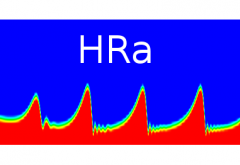Was ist es, was die Welt im Innersten zusammenhält? Die meisten sagen: „Das Geld!“ Ich möchte solchen Ansichten nicht beiwohnen und sage stattdessen: „Quarks und Gluonen!“
Schlagwort: HEP
Richard Feynman
When I was doing particle physics, Richard Feynman was my hero. Not only did he introduce Feynman diagrams which made high energy physics so much clearer, but also did he have a lot of humour. During a hard time I read his book Surely you‘re joking, Mr. Feynman! and I found it wonderful what a curious, intelligent character can live to see. Later I read the biography by Jagdish Mehra The Beat of a Different Drum. The title refers to Feynman’s passion for drumming and his originality. In an epitaph he was called a physicist’s physicist. Some people may have thought he was arrogant. But let us be honest, by far most people overestimate their intelligence 😉
Quantenfeldtheorie
Auf diesem Gebiet bin ich kein Experte. Als Doktorand saß ich viel im Zug zwischen Hamburg und Freiburg im Breisgau. So nutzte ich die Zeit dort, in Büchern über die Quantenfeldtheorie zu lesen. Elementarteilchen sind sehr klein und sehr schnell. Als Konsequenz braucht man sowohl die Quantenmechanik als auch die Spezielle Relativitätstheorie. Aus einer solchen Zusammenführung ist die Quantenfeldtheorie entstanden. Es ist keine vollkommene Theorie, weil einige Integrale divergieren, die man zu regularisieren und renormieren hat. Sehr unschön! Man glaubt deshalb, dass die Quantenfeldtheorie noch nicht das letzte Wort sein wird. Ein Buch, das ich besonders gut fand, ist:
ME Peskin and DV Schroeder: An Introduction to Quantum Field Theory
Der Griffiths
Als Student fand ich ein Buch über die Teilchenphysik so toll:
David Griffiths: Introduction to Elementary Particles
Damals war es in der ersten Auflage erhältlich. Was ist so gut an diesem Werk? Es ist geeignet für Masterstudenten, weil so vieles erklärt wird, was andere Bücher stillschweigend voraussetzen. Man bekommt eine Einführung in die spezielle Relativitätstheorie und die Tensornotation. Man versteht, was mit ko- und kontravariant gemeint ist. Die Diracgleichung wird gelöst und das Rechnen mit Gammamatrizen geübt. Die Feynmanregeln für QED, QCD und die elektroschwache Wechselwirkung werden postuliert und Wirkungsquerschnitte und Zerfallsraten berechnet. Schleifen (loops) wurden weitgehend ausgespart, aber das sind mathematisch sehr tiefe Gewässer. Es wird gezeigt, wie color factors zu bestimmen sind. Und endlich verstand ich, wozu die Luminosität gebraucht wird: Ereignisrate gleich Wirkungsquerschnitt mal Luminosität.
Feynman
In meiner Zeit als Teilchenphysiker war Richard Feynman mein Held. Nicht nur dass er die Feynman-Diagramme eingeführt hatte, die die Hochenergiephysik so viel begreiflicher machten. Er hatte auch viel Humor. In einer Zeit, in der mir wenig zum Lachen zumute war, las ich sein Buch „Sie belieben wohl zu scherzen, Mr. Feynman!“ und ich fand es wunderbar, was ein neugieriger, intelligenter Charakter alles erleben kann. Später las ich die Biographie von Jagdish Mehra „The Beat of a Different Drum“. Der Titel spielt auf Feynmans Originalität und Trommelbegeisterung an. In einem Nachruf wurde er bezeichnet als „a physicist’s physicist“, als ein Physiker durch und durch. Manche mögen ihn für arrogant gehalten haben, aber seien wir ehrlich: Die allermeisten Menschen überschätzen ihre Intelligenz 😉
Black Hole
Recently scientists succeeded in taking a picture of a black hole. Therefore, I want to write a few lines about this phenomenon.
In a black hole, matter is so highly compressed that even light cannot escape from its vicinity. General relativity treats a black hole as a point, i.e. it has no extension. This is hard to imagine. However, take as an example the electron which is considered as a point particle, although it has a mass at rest.
A black hole is surrounded by an event horizon. Everything that passes it becomes invisible for the world outside. If a matter-antimatter pair is created from the vacuum near the event horizon, a particle may cross it. The other particle seems to come out. This is Hawking radiation.
In particle physics, there are collisions at high energies. Can a black hole be produced in a collider experiment? This question was subject of a court dispute. The physicists bring forward the argument that the cosmic radiation contains particles of much higher energy. Although the cosmic radiation hits the Earth, our world still exists.
Jets in QCD
What are jets? What does QCD mean?
The intuitive picture of a jet is a collimated spray of particles which is created by the collision of two particles in a high energy physics experiment. (There can be more than one jet.) Quantum chromodynamics (QCD) is the physical theory behind them. It states that a certain class of particles, hadrons, are built of quarks and gluons. If a quark or gluon is scattered, a jet is created. A quark or gluon has never been observed as a free elementary particle and QCD states that this is not possible. Instead after a scattering new particles are created very rapidly that can be observed. Regarded as a jet they have the momentum of the scattered quark or gluon. The exact definition of a jet is not trivial and there are sophisticated algorithms to find them.
Why are jets interesting to physicists?
With their aid conclusions can be made on the fundamental process without having to measure a free quark or gluon.
